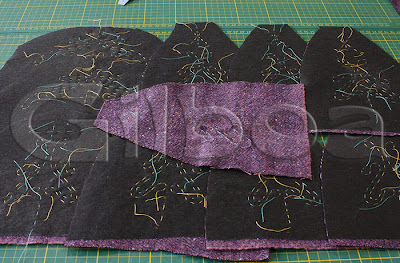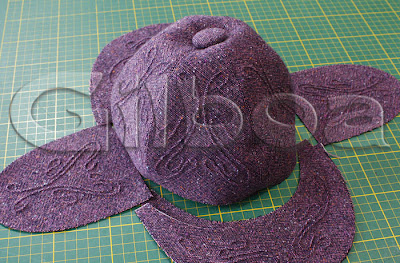This beret is one of the more recent creations and I rather spend time creating than writing, therefore forgive the short explanatory notes along with the photographs.
The design is sketched on transparency paper and then re-inforced with clear tape as it will see a lot of 'abuse' from the tracing wheel.
The reverse of the tweed has been temporarily covered with interfacing so that the yellow dots of the transferred design become visible. However, the pin-tucks will be on the facing side of the fabric, so the design now has to be traced with hand stitching.
All 10 pieces are now ready for pin-tucks. The temporary interfacing has been mostly removed.
And some time later, all 10 pieces are now ready to be cut into their actual shape. Each piece is a different shape, giving the Gilboa Beret its unique shape.
The pieces are joined together.
After all 10 pieces are joined together to form the beret, the beads that are on each end of the pin-tucks are hand sewn (you can see the beads in the final photographs)
After all 10 pieces are joined together to form the beret, the beads that are on each end of the pin-tucks are hand sewn (you can see the beads in the final photographs)
The lining (not photographed) is also made up of 10 pieces and in this case is a lovely cotton lawn with a playful floral pattern.
Selecting the feathers - All feathers are a by product of gamekeeping and are specially cleaned before use.
The feathers are roughly arranged on the hat before making a final decision.
One set of feathers with antique button for the back and one for the front (which you will notice was changed later).
The beret has a special inner lining that allows it to be shaped according to your wishes.
This Beret is available on Etsy


















































